|
 
- 现金
- 62111 元
- 精华
- 26
- 帖子
- 30437
- 注册时间
- 2009-10-5
- 最后登录
- 2022-12-28

|
| Single Dose of Monoclonal Antibody
Quickly Cuts HBsAg in Phase 1 Trial
| | | | | EASL International Liver Congress, June 23-26, 2021
Mark Mascolini
Single low doses of the neutralizing vaccinal monoclonal antibody (mAb) VIR-3434 rapidly lowered hepatitis B surface antigen (HBsAg) levels in a phase 1 study of people with chronic HBV infection [1]. (HBsAg indicates current HBV infection.) Higher doses of VIR-3434 are being evaluated in this trial, and VIR-3434 will be studied in combination with the siRNA VIR-2218 [2].
Research suggests that VIR-3434, an engineered human mAb against HBsAg, may trim HBsAg concentrations by more than one mechanism: (1) inhibition of viral entry by neutralizing all 10 HBV genotypes, (2) cross-presentation to and stimulation of T cells (a vaccinal effect), and (3) clearance of HBsAg and delivery to dendritic cells. A separate part of this phase 1a study also presented at the EASL International Liver Congress found that healthy volunteers tolerated single doses of VIR-3434 up to 3000 mg and that pharmacokinetic properties support subcutaneous dosing [3].
The second part of this phase 1a trial enrolled people with chronic HBV who had suppression of HBsAg to below 3000 IU/mL. Researchers randomized 8 people in each of five dose cohorts in a 6:2 ratio to receive a single subcutaneous dose of VIR-3434 (6, 18, 75, <300, or <900 mg) or placebo. The presentation at EASL focused on HBsAg data up to 4 weeks after dosing in people receiving 6 or 18 mg of VIR-3434 or placebo.
The study enrolled 18- to 65-year-olds with chronic HBV infection who had HBV DNA below 100 IU/mL. Everyone was negative for hepatitis B e antigen (HBeAg) and negative for hepatitis B surface antibody, had taken nucleos(t)ide therapy for at least 2 months, and had an HBsAg level below 3000 IU/mL. No one had significant fibrosis or cirrhosis, alanine or aspartate aminotransferase more than 2 times the upper limit of normal, active HIV, HCV, or hepatitis Delta virus infection, creatinine clearance below 75 mL/min, or a history of anaphylaxis.
Compared with the 6-mg group, the 18-mg group was nonsignificantly younger (average 48.8 vs 56.5) and had a nonsignificantly higher initial average HBsAg level (837 vs 197 IU/mL). There were 8 men in the 6-mg group and 7 men and 1 woman in the 18-mg group. Proportions of Asians, Whites, and Blacks were 50%, 38%, and 12% in the 6-mg cohort and 50%, 12%, and 38% in the 18-mg cohort. Median body mass index stood at 25 kg/m2 in the 6-mg group and 26 kg/m2 in the 18-mg group.
No one in either treatment arm had a serious adverse event or left the study. All adverse events were grade 1 or grade 2. The researchers observed no clinically significant lab abnormalities or changes in liver function tests and no injection-site reactions. No clinical or lab signs of immune complex disease developed in any participants in these two dose groups.
Researchers remain blinded to VIR-3434 or placebo assignment, so virologic results did not indicate who was assigned to active treatment or a dummy injection. But results did separate the 6-mg/placebo group from the 18-mg/placebo group. Most participants in both dose groups had at least a 1 log10 IU/mL (10-fold) drop in HBsAg within the first 2 to 4 days after dosing. Maximum HBsAg declines usually came within 7 days of dosing. People in the 18 mg/placebo group had the biggest HBsAg drops-greater than 1.5-log10 IU/mL.
Although the researchers stressed the preliminary nature of these findings, they suggested that the data "support the potential for VIR-3434 to have a meaningful role in the functional cure of chronic HBV infection."
References
1. Agarwal K, Yuen MF, Wedemeyer H, et al. A phase 1 study evaluating the neutralizing, vaccinal monoclonal antibody VIR-3434 in participants with chronic hepatitis B virus infection: preliminary results. EASL International Liver Congress, June 23-26, 2021. Abstract OS-211.
2. Gane E, Lim YS, Cloutier D, et al. Safety and antiviral activity of VIR-2218, an X-targeting RNAi therapeutic, in participants with chronic hepatitis B infection: week 48 follow-up results. EASL International Liver Congress, June 23-26, 2021. Abstract OS-44.
3. Gupta SV, Arizpe A, Fanget MC, et al. Preliminary pharmacokinetics and safety in healthy volunteers of VIR-3434, a monoclonal antibody for the treatment of chronic hepatitis B infection. EASL International Liver Congress, June 23-26, 2021. Abstract PO-43. 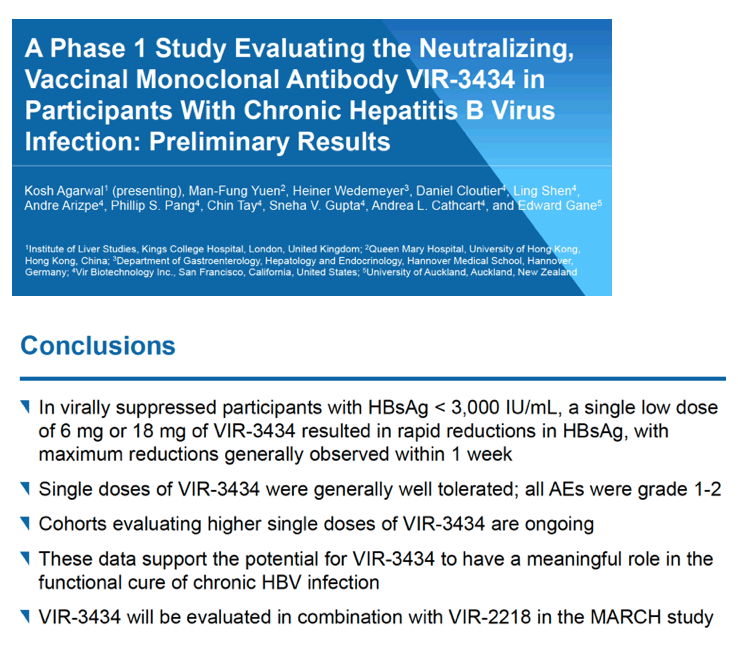
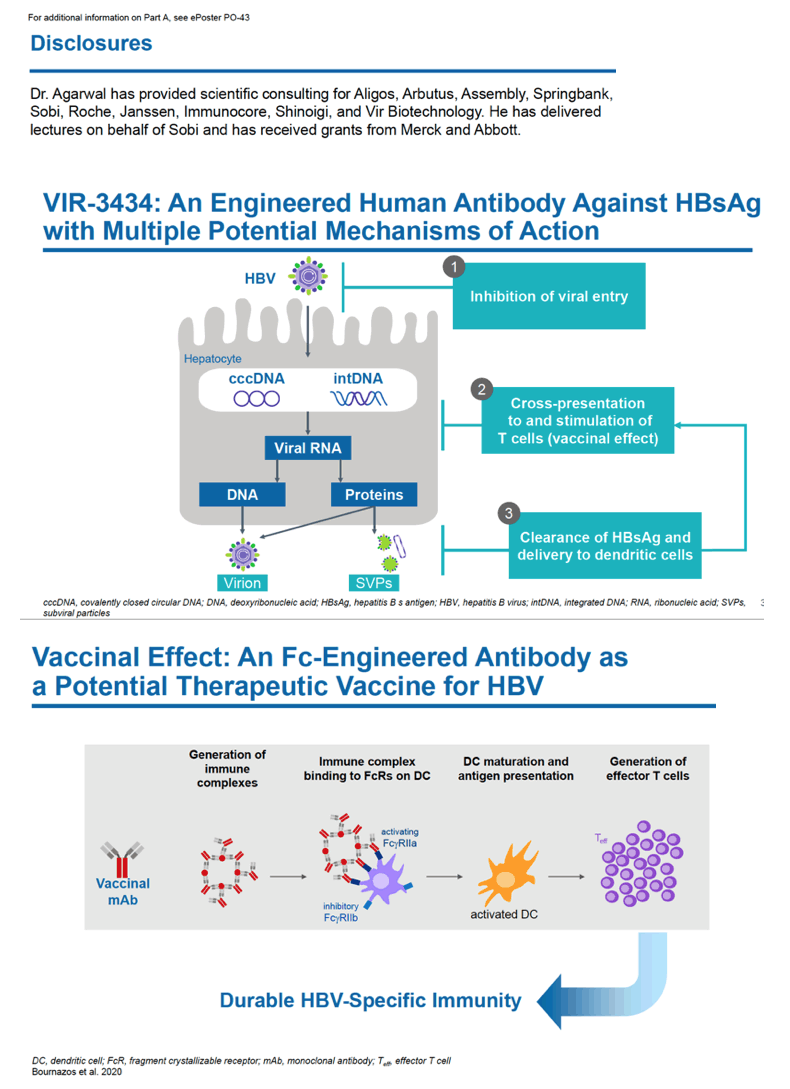
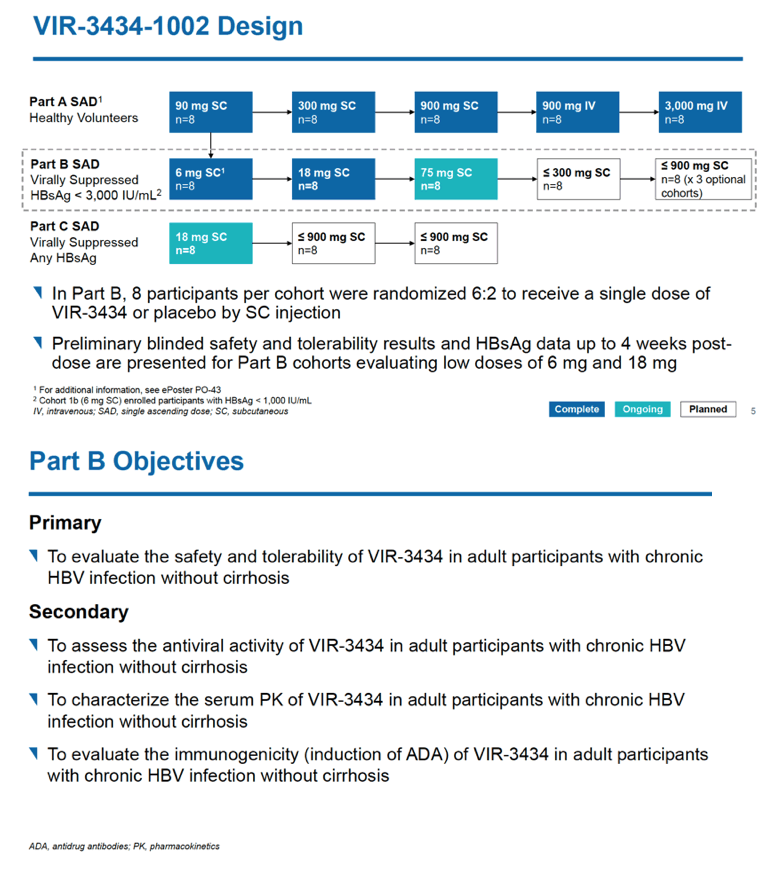

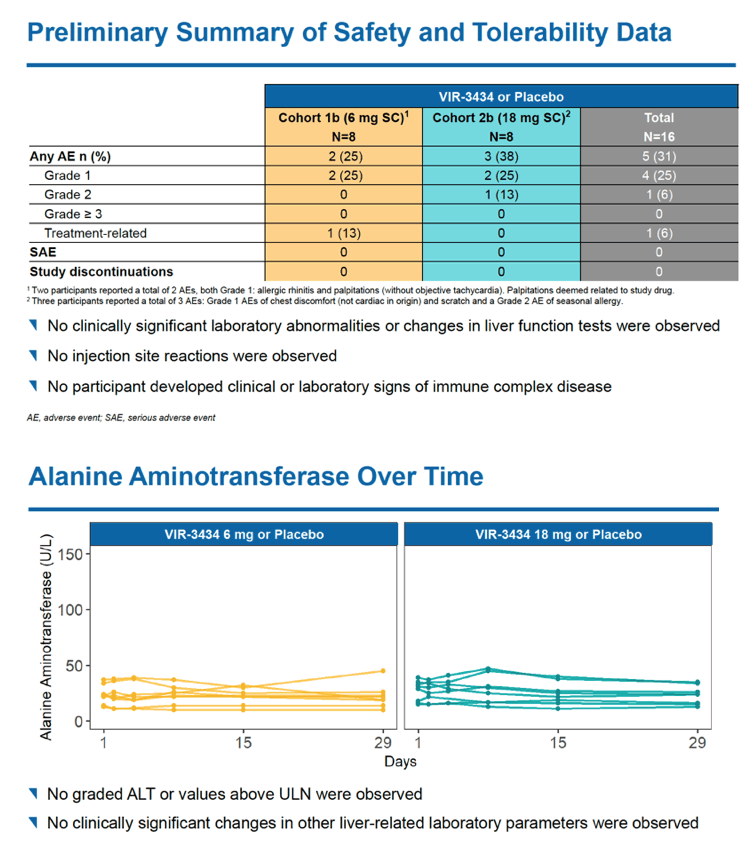
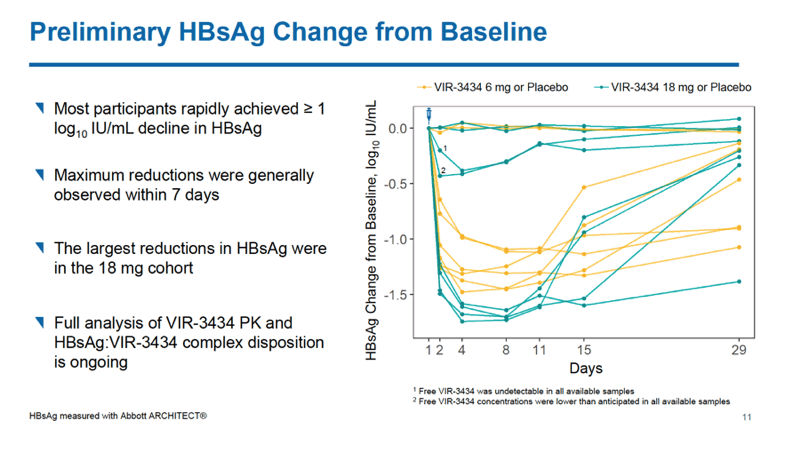
| | |
|  |  |
|
|